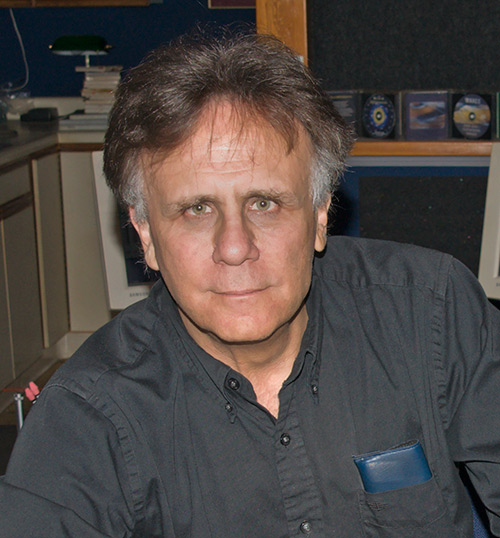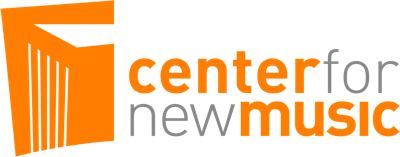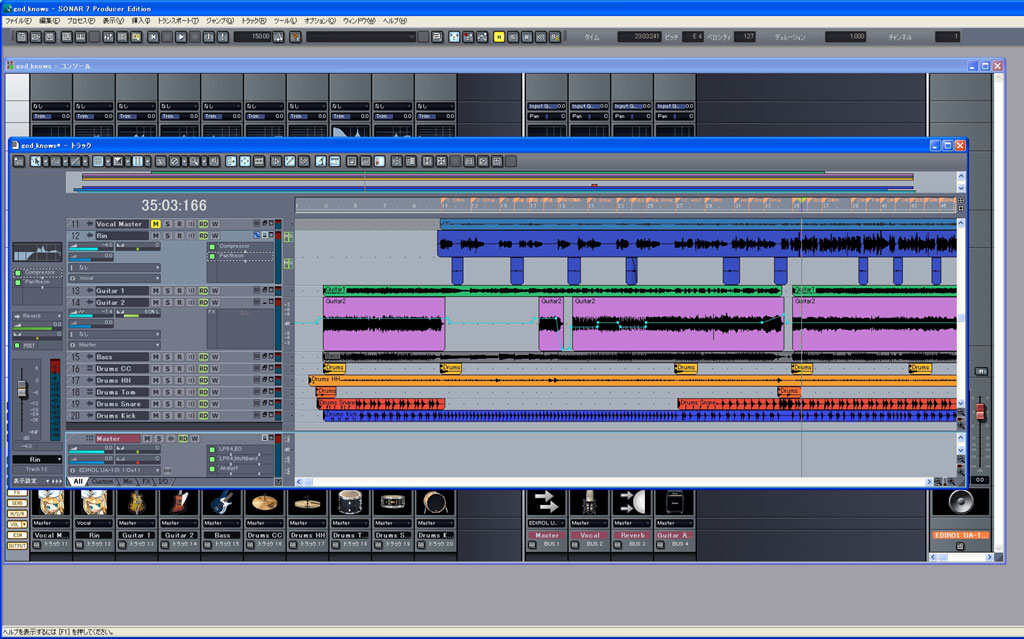
home | recordings | compositions | press | services | instruction | articles | studio | biography | credits | links
Beyond the MIDI Mockup
A workshop presented
by Composer & Music Producer Jerry Gerber
in partnership with Manhattan Producers Alliance
and the San Francisco Center for New Music

"Is that a real orchestra in his studio? Believe him
when he says it's electronic,
but Jerry Gerber's 'Symphony #4 for the Virtual Orchestra is so artfully done,
so musically
sensitive and convincing, that it emerges as one of the finest examples of
electronic orchestration that there is..."
Electronic Music Foundation
"Jerry Gerber possesses that rare combination of
technical and musical knowledge together with the ability to
organize and communicate it clearly to the student. I sought Jerry out
because I wanted to improve my understanding
of the challenges of orchestration for virtual instruments. He not only
helped me to more clearly understand and how to get the
best out of these remarkable but complex tools, he also was able to draw
on his considerable background
in acoustic composition to help me expand my understanding of traditional
orchestration and form,
both areas in which I have had a life long interest..."
Kevin Kern
(Steinway artist with 7 Billboard charting CDs)
"The symphony, cello sonata, and the
songs just knock me out. The symphony particularly impresses,
and I
believe Gerber has just finished a fifth. It takes large breaths, and it
shows a big artistic nature willing to take risks.
The first movement –
all eleven minutes of it – flows from first note to last and furthermore
sports an unusual rhetorical structure.
The final minute or so is both a
surprise and logical outcome. The second movement, a scherzo, dances in
11/8 time.
It's so well done that, had Gerber's note not informed me, I
doubt I would have known.
The slow third movement is a hymn that moves
from great sadness to great power."
Classical.net

Manhattan Producer's Alliance is a group of music professionals including
composers, producers and engineers dedicated to service, outreach and high
standards
of music composition and production

The Center for New Music San Francisco, Inc. is a community
center for participants of new music in San Francisco

|
This workshop is offered to musicians with playing and writing skills who want to create the most artistic MIDI recordings possible with the technology they have available. All participants may bring a laptop with their respective Digital Audio Workstation (DAW) installed, although it is not required. The topics and techniques we will discuss are cross-platform and will enable musicians to create MIDI recordings with excellent performance values--music with expression, gesture, nuance, depth and subtlety. DAWs that have a notation editor are preferred, but those more familiar with the piano-roll style of editing will still learn valuable information and new skills. Techniques and concepts learned will help the participants use their digital tools in a way that goes beyond the MIDI mockup.
Workshop Introduction
Since the inception of MIDI, it is undeniable that our tools have
improved immensely. Sample
libraries are far larger, better recorded and integrated with software
that is now capable of increasingly subtle, varied and intricate
programming by the musician. The capacity of the computer to process and store large amounts
of data is ever increasing.
Our software synthesizers are truly amazing musical instruments, capable
of expressing new, unique timbres that only a digital synthesizer can
reproduce. The tools of this medium can be used for many diverse
purposes including serious artistic expression and exploration, music
education, a mockup for acoustic performance, in soundtracks for visual
media and games, as a research tool in music and acoustics, as a
life-path and artistic discipline. We don’t think of photography as
a mock-up for painting, although it can and has been used that way, nor
do we consider film as a substitute for live plays. So too a MIDI recording can be an end in itself.
Whichever is the best way for
you to be involved with computer and audio instruments, the real magic
and power is in the imagination, the love of curiosity and
experimentation, to risk, create and discover the infinite possibilities
of arranging sound to communicate meaning.
The
MIDI mock-up idea arose out of three primary practical considerations:
1) the tight deadlines that compel film and TV composers to work very
quickly, 2) the need of directors and producers of other media to be
able to get an idea of what the composer is actually creating for the
project, and 3) the habit
and inertia of tradition bearing down on our ideas about music, sound
and art in general.
As a
Stradivarius violin will not sound good if the person playing it has
little or no playing skill, MIDI won’t necessarily sound good merely by
flipping a switch or making a few mouse clicks. MIDI
doesn’t make digital music creation and music production
easy, it makes them
possible. Like any medium, there are techniques and methods that can be
learned, practiced and refined, and through these techniques we can create and
produce music with vision, intention, gesture, dynamics, flow,
groove—words to describe the unique power of
music to thrill, calm, motivate, delight, seduce, entice and transcend
our normal waking consciousness. Musicians have not been making music with electricity nearly as
long as we have been making music with bone, metal, animal gut and wood. Yet electrons have always been within our bodies and minds and in the
environment, even when humans were primitive savages living in caves, so
we can accept electricity as organic to natural life. Music, both acoustic and electronic, is essentially about
moving sound through air, and conveyed in those sounds are ideas,
values, sentience and knowledge. |
I. Introduction
A.
Earliest musical instruments
1. Earliest electric instruments
2. Earliest digital instruments
B. The larger perspective of what we're doing here
1. The lure of beauty
2. Gravitating toward the new
3. Pursuing artistic expression through creativity and imagination
C. Humanizing music technology
1. Randomness, variation, intention, phrase-shaping
2. Avoiding the dreaded "machine-gun" effect
D. The creative state of consciousness and how to awaken and exercise it
1. Quieting and focusing the mind
2. Transcending fear and a sense of separateness
II.
Basics
A. A. Ports, channels, patches and banks
1. MIDI Messages, MIDI Time Code
2. Software synthesizers & sample players
a. Operation often one of three types:
1. One instance, multiple simultaneous timbres, each assigned to a different MIDI channel (Kontakt)
2. One instance, one timbre at a time, patch-switching allowed (Tera, Massive)
3. Each instance can only hold and play one timbre. Additional timbres require additional instances (Rapture)
B. Samples, sample-sets, instruments, articulation groups
C.
MIDI
data/audio data
III.
Sequencing
Techniques
A .A.
Six
parameters that define and shape a musical tone
1.
Pitch
2.
Timbre
3.
Amplitude
(velocity + volume)
4.
Envelope
5. Length
6.
Location
relative to the beat
B.
Phrasing
C.
Dynamics
D. Tempo Maps
IV.
Working with
Libraries
A.
MIDI
controllers and your DAW
B. Creating templates and organizing your library
C. Finding the best articulation for the phrase
D. Transparency, weight, balance & blend
E. Piston's seven orchestral textures
1. Orchestral unison
2. Melody & accompaniment
3. Secondary melody
4. Part writing (choral style)
5. Contrapuntal texture
6. Chords
7. Complex texture
V.
Rendering to Audio
A.
Using volume
envelopes rather than compression
B. EQ, exciters, compression, stereo imaging, peak limiting
C.
What about
stems?
Also (not necessarily in order):
Listening to musical examples
Twenty minute break
Individual help
Beyond the MIDI Mockup will take place at the Center for New Music
in San Francisco at
55 Taylor Street on Saturday, May 18th, from 11:00 a.m. to 3:00 p.m.
Cost for the workshop:
$60.00
Student or CNM membership discount: $40.00
Space is
limited, so reserve your place in the workshop soon.
Any Questions?
Contact Jerry Gerber at 415.242.4003 or
jerry@jerrygerber.com.
home | recordings | compositions | press | services | instruction | articles | studio | biography | credits | links